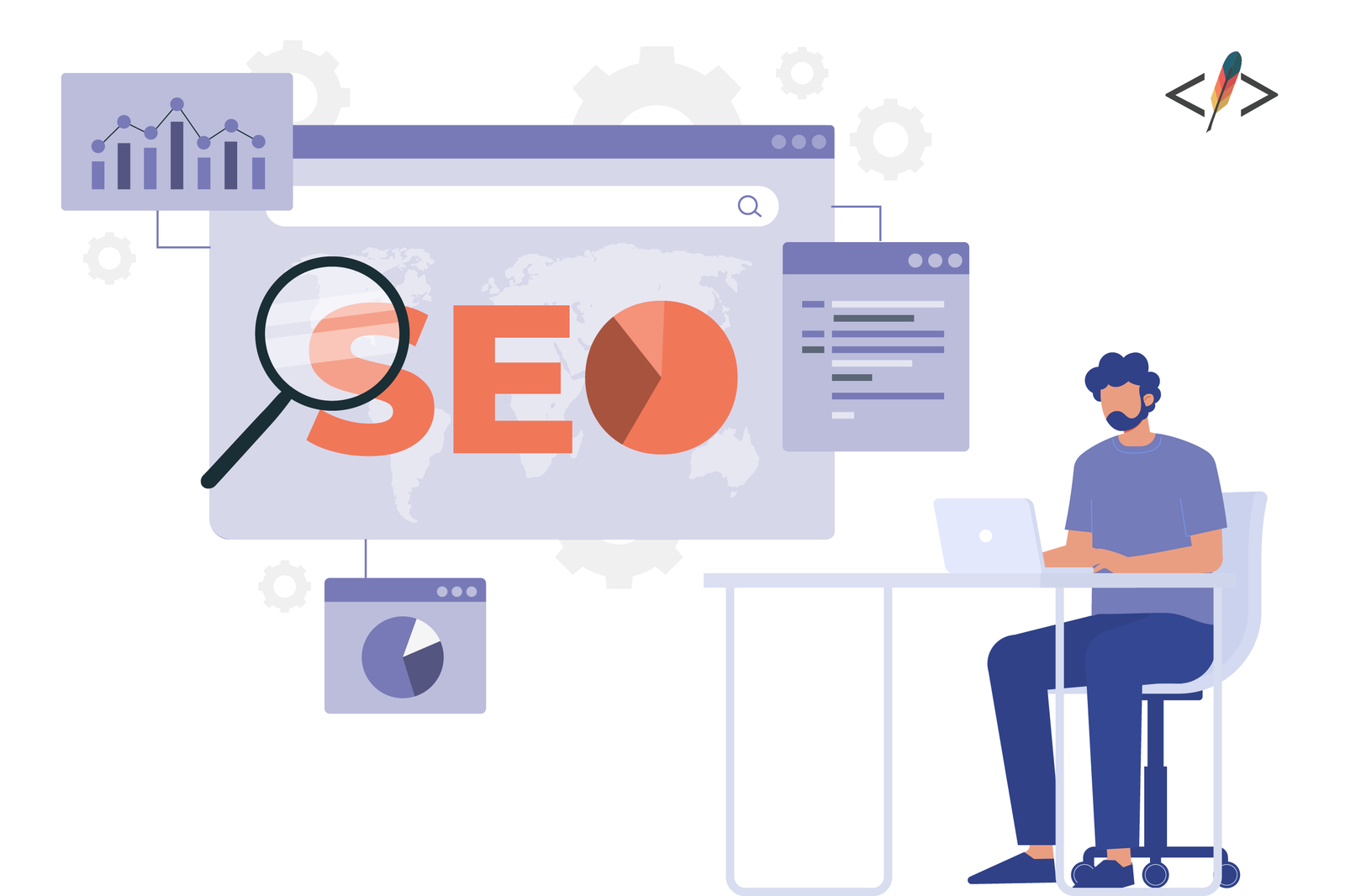

Why User Experience Matters—How UX/UI Affects SEO for Small Businesses
In 2024, standing out online requires meticulous attention to user experience (UX) and user interface (UI) design, which significantly impact SEO. UX refers to the overall feeling users have when interacting with a site, while UI focuses on the visual elements. Both are crucial for small businesses as they improve session durations, conversion rates, productivity, customer retention, and ad ROI. Strong UX/UI design not only enhances user satisfaction but also boosts SEO by improving site speed, responsiveness, mobile-friendliness, navigation, and visual stability, ultimately leading to higher search engine rankings.

A decade ago, simply having a website provided enough of a competitive edge for small business owners to stand out among their competitors—but this is 2024. Emerging from the increasingly saturated online landscape now requires meticulous attention to detail and a solid, data-backed strategy. Let's explore how user experience/user interface design impact SEO and discuss the benefits of improving this vital element.
Defining UX—Why User Experience is Important
User experience (or UX) describes the overall feeling a user has when interacting with a website or app. UX comprises many elements, including a site's architecture, speed, organization, ease of use, design, and functionality. A website with outstanding UX leaves users feeling that their needs and goals were met from the start to the end of their experience on the site.
Why is User Experience So Important for Small Businesses?
A well-strategized and properly implemented user experience design allows your website visitors to achieve their goals—including those with educational and commercial intent. For small business owners, good UX has a substantial ROI:
- Increased Average Session Durations: Efficient sites with accessible, intuitive usability report lower bounce rates than slow, confusing ones.
- Higher Conversion Rates: Solid UX optimizes the conversion funnel by reducing friction and encouraging users to take action.
- Elevated Productivity: UX on sites used for internal business operations enables employees to work more efficiently and effectively.
- Improved Customer Retention: Providing users with a favorable experience appeals to their feelings and increases brand loyalty.
- Maximizes the ROI of Paid Advertising: Good UX works to support paid advertising campaigns, ensuring each ad dollar you spend is utilized most effectively.
Together, these advantages also improve a site's SEO, proving incredibly valuable in today's ultra-competitive technology landscape. We will expand on this in greater detail later.
Defining UI—What User Interface Means
User interface (or UI) describes the visual design of a website or app, including components such as text, images, menus, navigational prompts, buttons, color schemes, animations, and more.
Key Takeaway: It's important to note that UI is a subset of UX. UI refers to a website's visual aspect from a user's standpoint. UX refers to a user's overall experience on a site, which is partly influenced by visual elements in addition to emotions and feelings.
Why User Interface is Important for Small Businesses
Since UX and UI are so fundamentally associated, many within the industry lump the terms together: UX/UI. For that reason, good UI has similar benefits to good UX—they work best in tandem together. However, you'll notice slight differences between appealing to visuals (UI) and feelings (UX).
- Increased Average Session Durations: Well-organized, visually appealing sites motivate users to spend more time on them.
- Higher Conversion Rates: A straightforward, concise UI optimizes the conversion funnel and enables users to take action.
- Elevated Productivity: UI design can simplify employee tasks and make them more enjoyable, positively impacting team attitudes.
- Improved Customer Retention: Providing users with a visually pleasing experience appeals to aesthetics, increasing brand loyalty.
- Maximizes the ROI of Paid Advertising: UI that captivates users works in harmony with paid advertising campaigns to ensure every dollar you spend is put to the best use.
Increased traffic levels and longer session durations indicate to Google which pages are more valuable in users' eyes. As a result, SERPs display these pages higher in search results, improving a site's overall SEO.
SEO Definition—Demystifying What SEO Means
SEO is the industry-standard abbreviation for “search engine optimization.” This technical term refers to principles that increase a website's ranking within search engine results pages (SERPs). Properly strategized SEO is fundamental for a high-ranking site during the development and design stages (website speed, page loading, menu hierarchy) and content creation (blog posts, product uploading, new page content, and more).
Why SEO is Important for Business Websites
Strong SEO is a vital digital marketing strategy that businesses do very well to implement. As the direct alternative to paid advertising, good SEO drives organic—read: free—traffic to a website. Many small business owners just starting out on their entrepreneurial journeys have relatively limited budgets, so extensive paid advertising campaigns are not always feasible.
However, SEO allows business owners to reach new leads—and, better yet, these leads are actively searching for what you can provide them. Ranking higher in SERPs has additional payoffs, too, including:
- Increased brand visibility
- Improved sales
- Added credibility
- Increased brand trust
- Increased authoritativeness
- Improved competitivity
Key Takeaway: Business owners must prioritize SEO to achieve scalable success. Thankfully, improving UX and UI significantly enhances a site's SEO ranking.
Let's explore in more detail how SEO and UX/UI are connected. Before doing so, we'll review how SEO works, thanks to the genius minds at Google itself.
A Brief Reminder of How SEO Works:
Web developers publish a website or add new content/pages, and Google crawls it, downloading text, images, and videos.
Google analyzes the information and stores it in an index.
When users enter a search, Google returns information organized based on what the analysis shows as the most experienced, expert-like, authoritative, and trustworthy.
Why User Interface and User Experience are an Integral Part of Your SEO Strategy
Considering the recent ranking shake-ups and updates to SEO best practices, business owners need to ensure that their sites are 100% optimized. Updating page content and improving keyword optimization is a great start, but UX/UI cannot be left to chance.
A poor user experience does more than simply scare away a customer or two. (Plus, every site visitor is valuable, especially for small businesses.) For example, pages that constantly experience very short session durations tell Google's crawlers that they don't contain any value. As a result, the page rankings may dwindle, and the overall SEO level may decline.
On the other hand, increased traffic levels and longer session durations indicate to Google which pages are more valuable in users' eyes. As a result, SERPs display these pages higher in search results, improving a site's overall SEO.
5 UX/UI Principles that Impact SEO
- Page Load Speed—A study from Statista indicates that mobile sites lose 74% of traffic within the first five seconds of load time.
- Responsiveness—Responsive UX/UI engages users on various platforms and increases ease of use, boosting session durations and conversions.
- Mobile-Friendliness—Google isn't keeping it secret: SERPs prioritize mobile-first indexing. Thus, in our mobile-first world, you must optimize your site accordingly.
- Intuitive Navigation—Users must be able to quickly locate the page and information they're looking for. Crawlers also thrive on logical, organized architecture.
- Visual Stability—When a page loads, elements shouldn't appear to move around the screen. Users have shown their disapproval of this, and, as a result, Google has recently addressed it.
User Experience and User Interface Design Experts at Codepoet
When implemented strategically, SEO, UX, and UI work seamlessly together, like a well-oiled, lead-driving, highly converting machine.
If you're worried the UX/UI of your current site doesn't quite hit the mark, reach out to us today to chat. We can help strategize the short- and long-term solutions that will empower your growing business to reach new heights.



